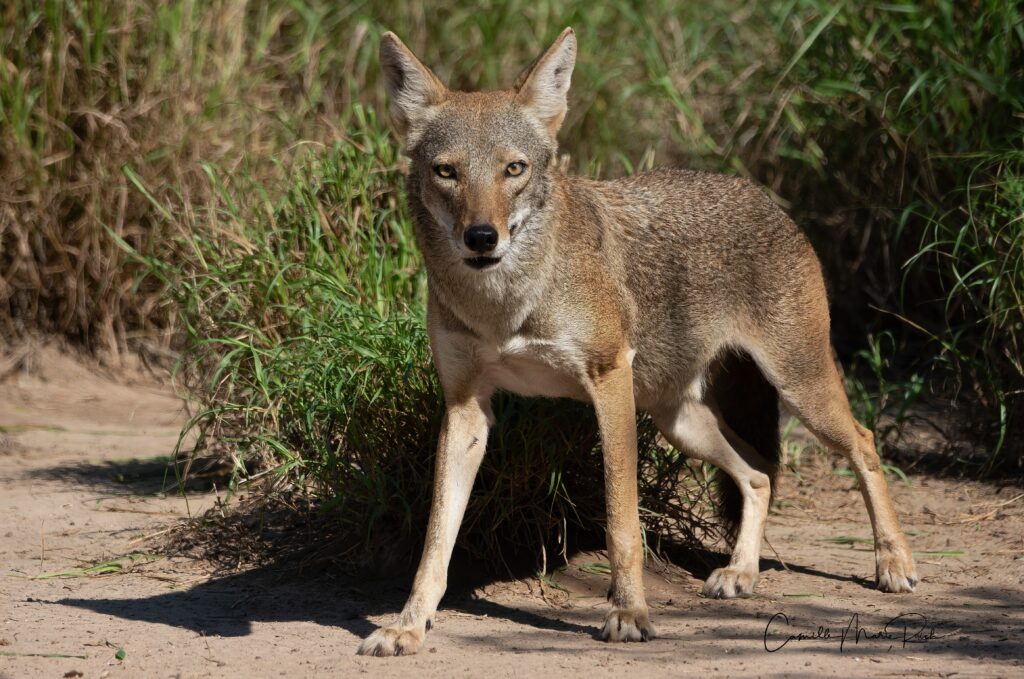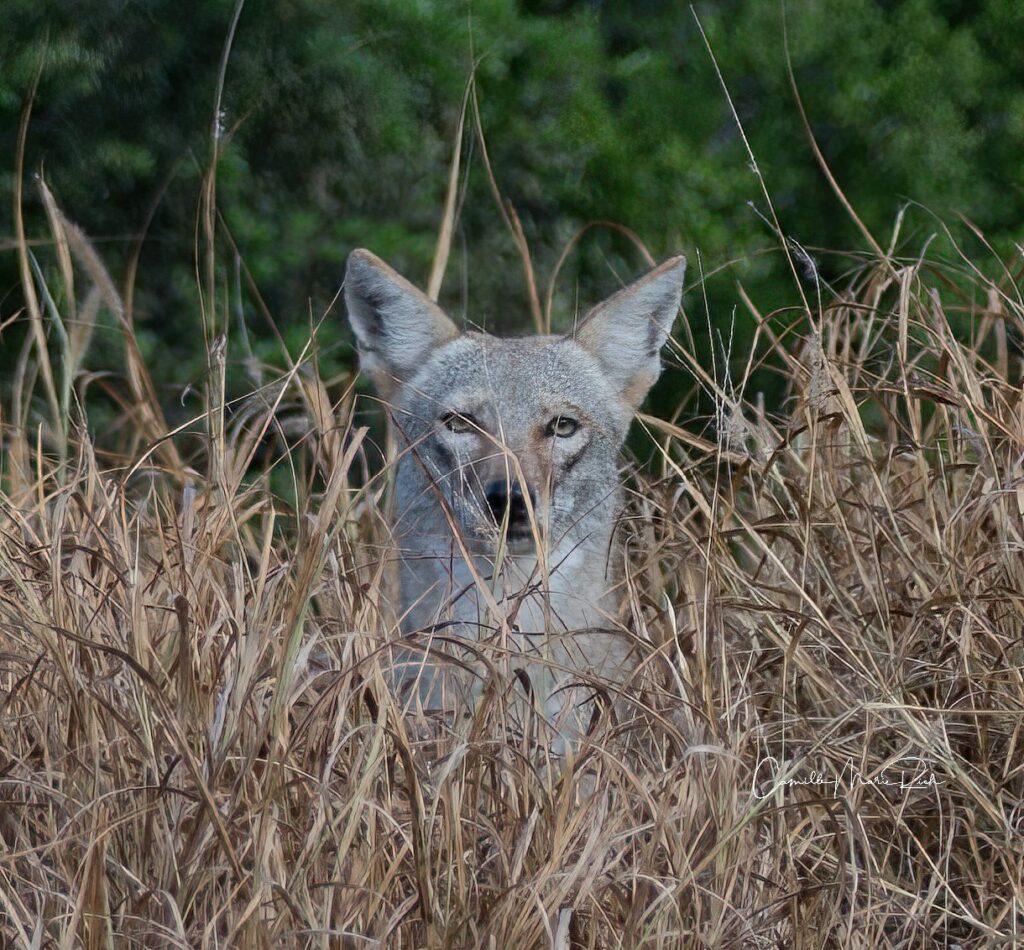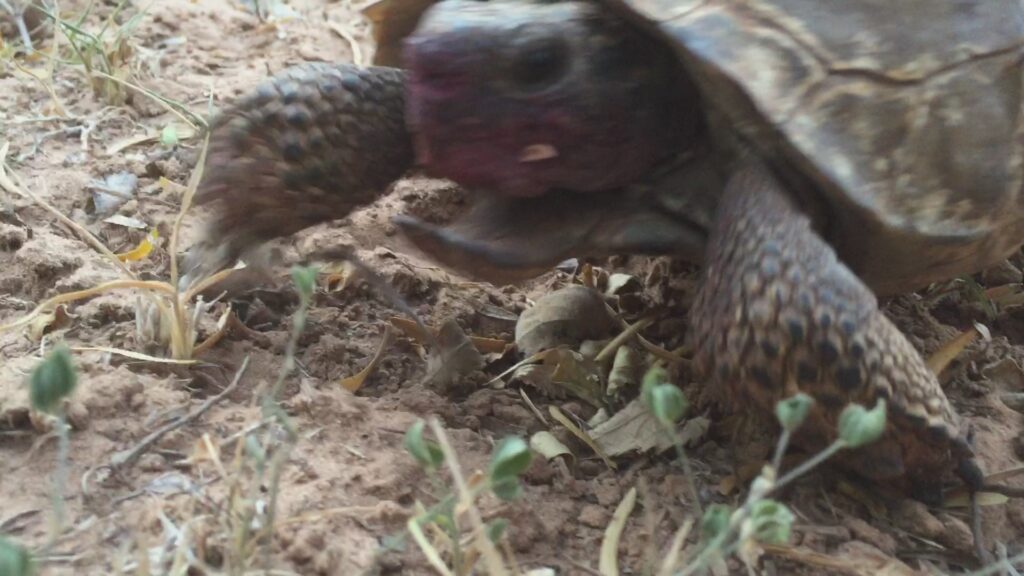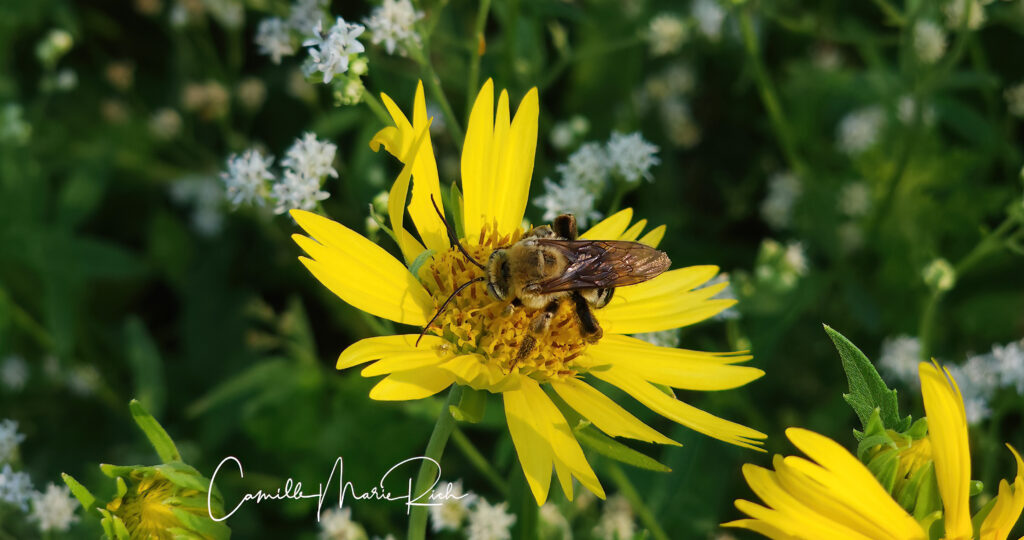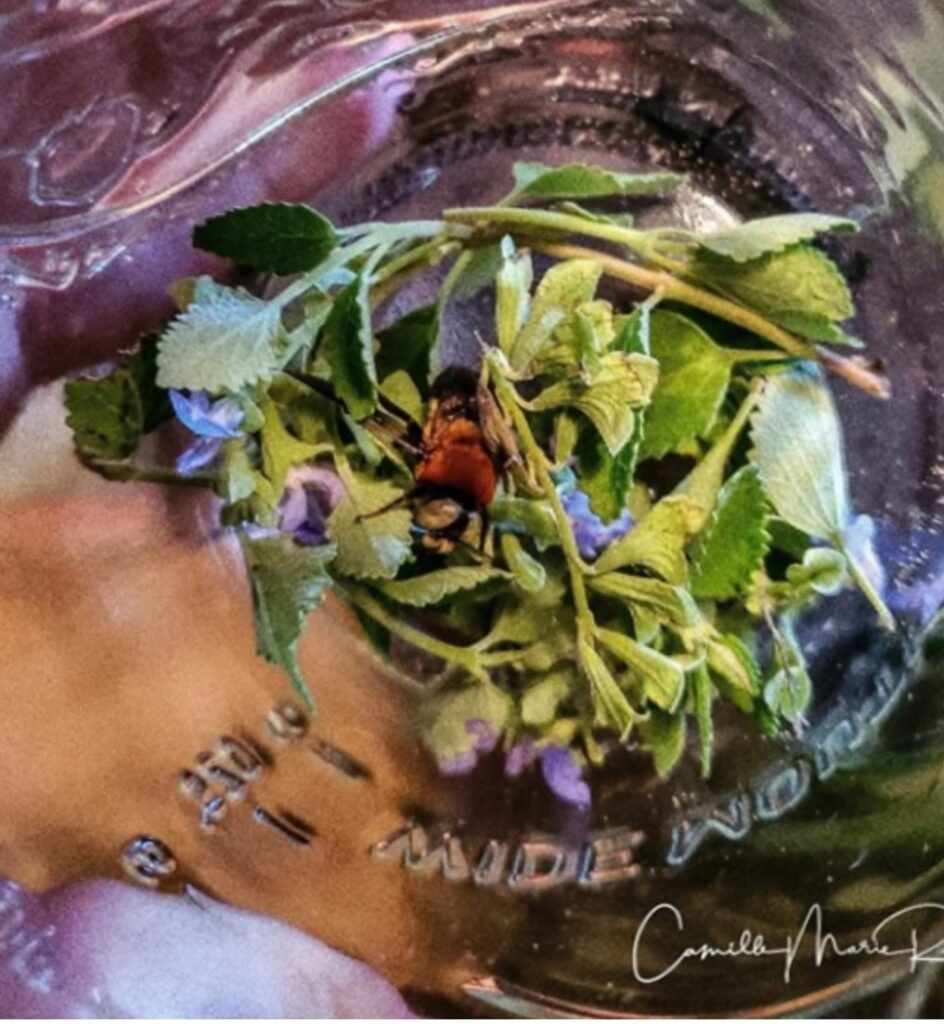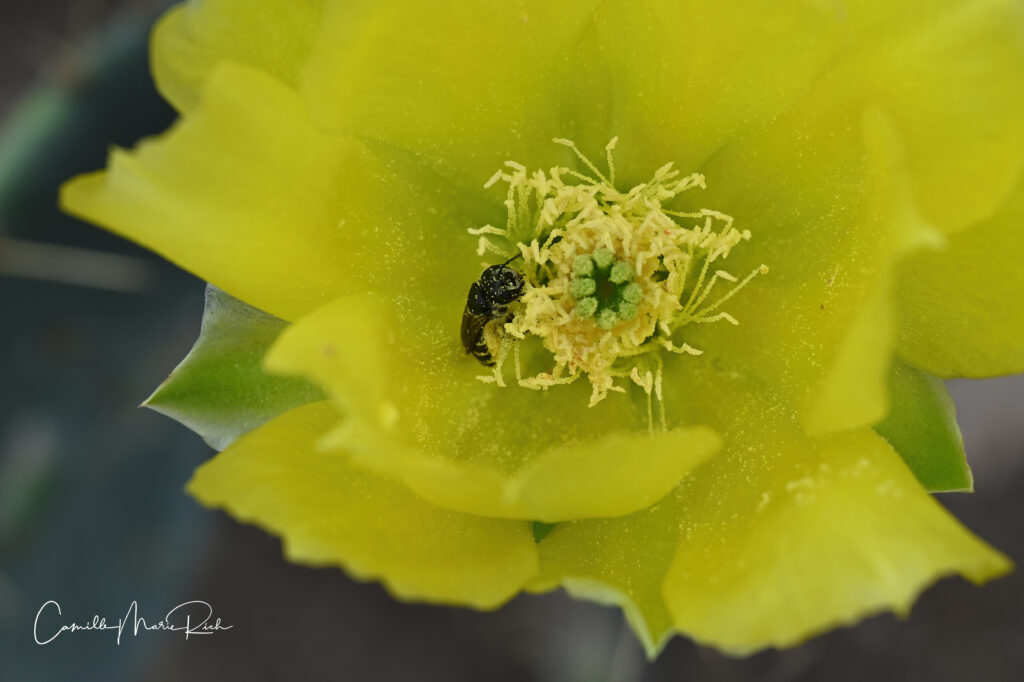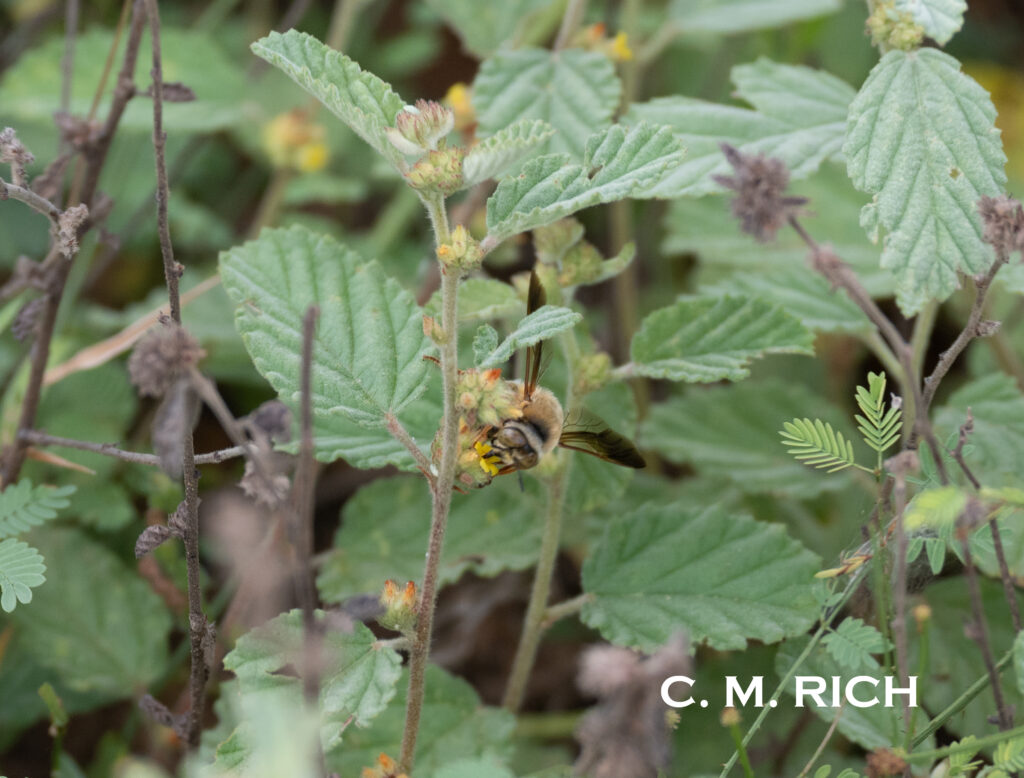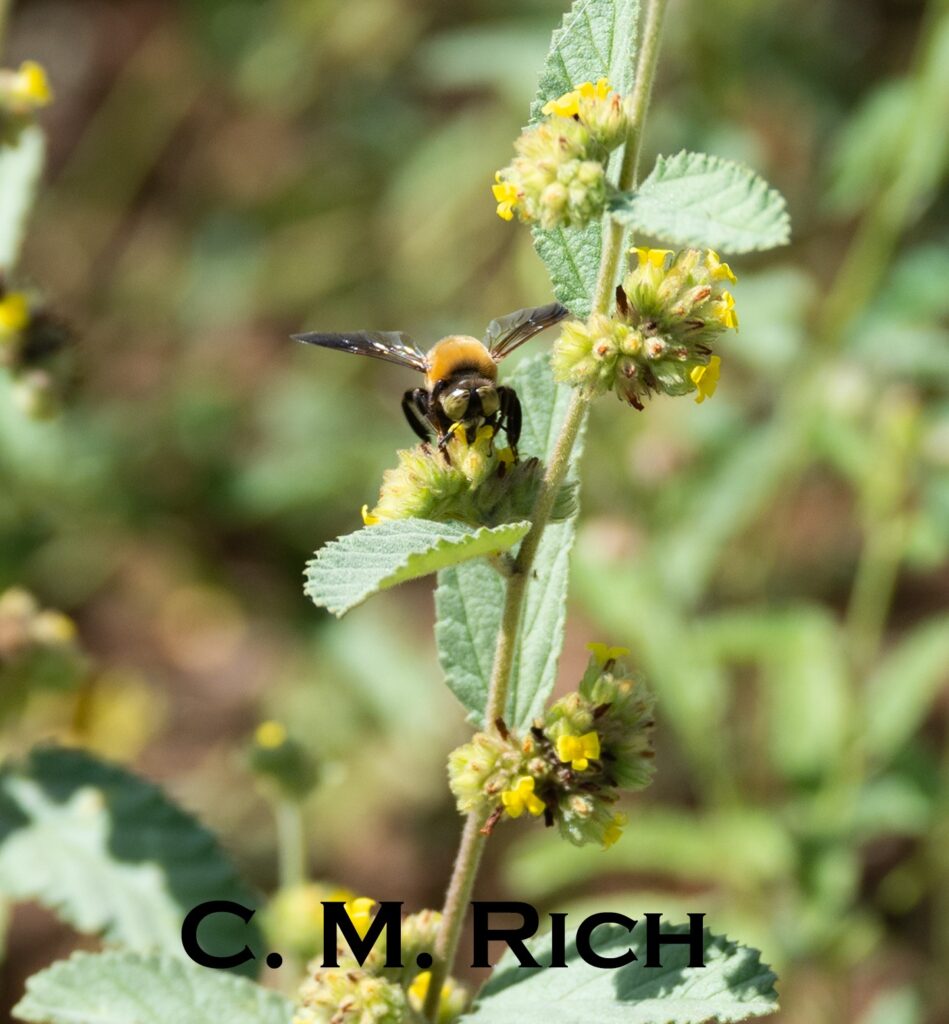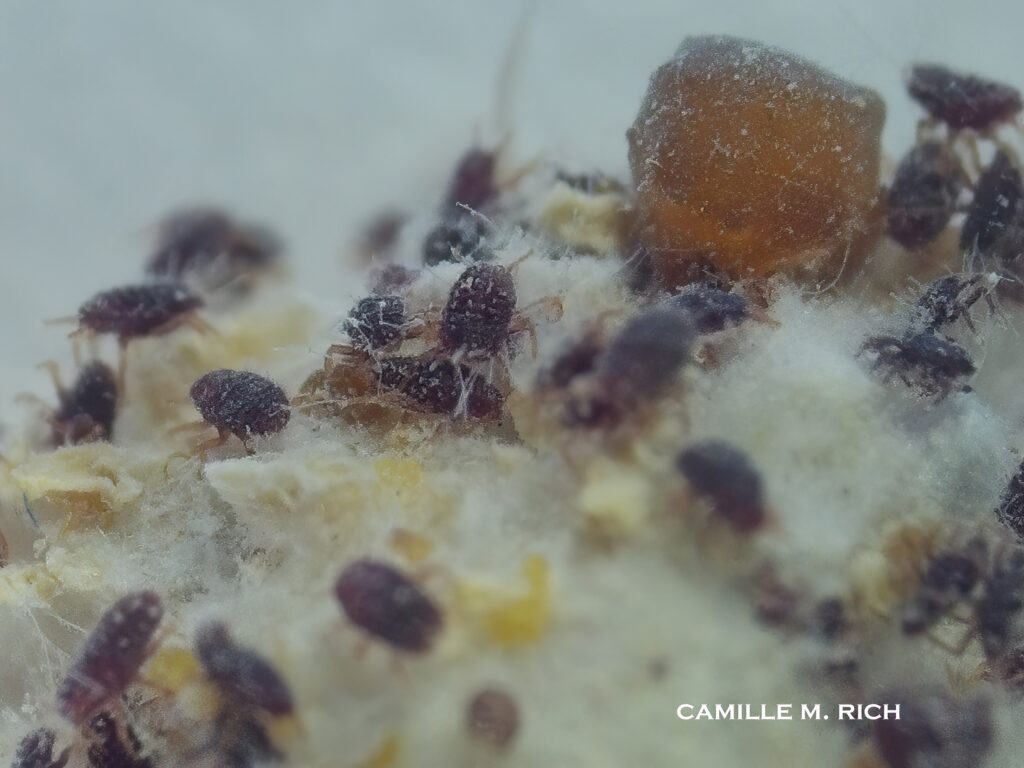
“Cochineal – Under the Microcope” by Camille M. Rich, Steward & Texas Master Naturalist
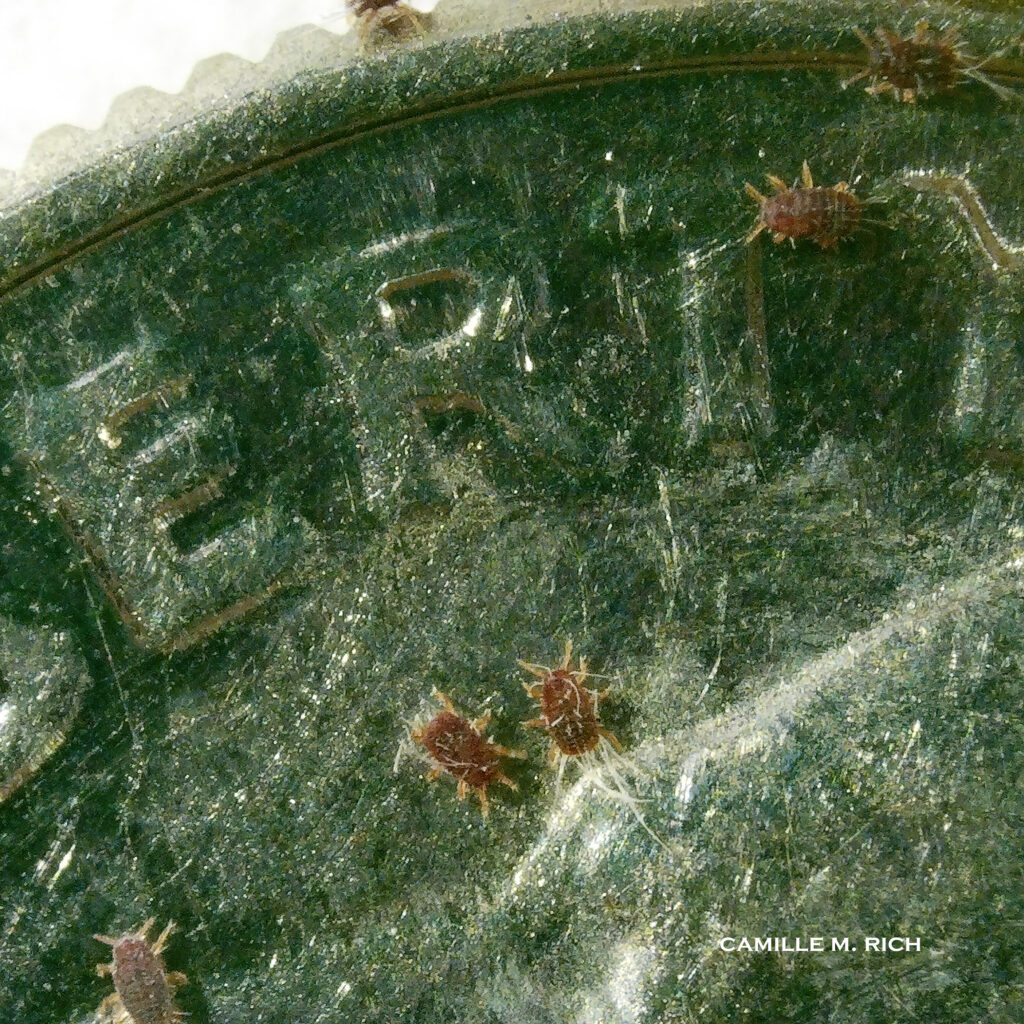
On recent ranch trips over the last couple of months to El Mesteño Ranch and Arboretum, I began noticing what seemed to me to be an extremely large amount of cochineal (Dactylopius coccus) on the Prickly Pear cacti (Opuntia engelmannii var. linderheimeri—significantly more than I had noted in previous years. Here in deep South Texas, we commonly refer to Prickly Pear cacti by its Spanish name “nopal.”
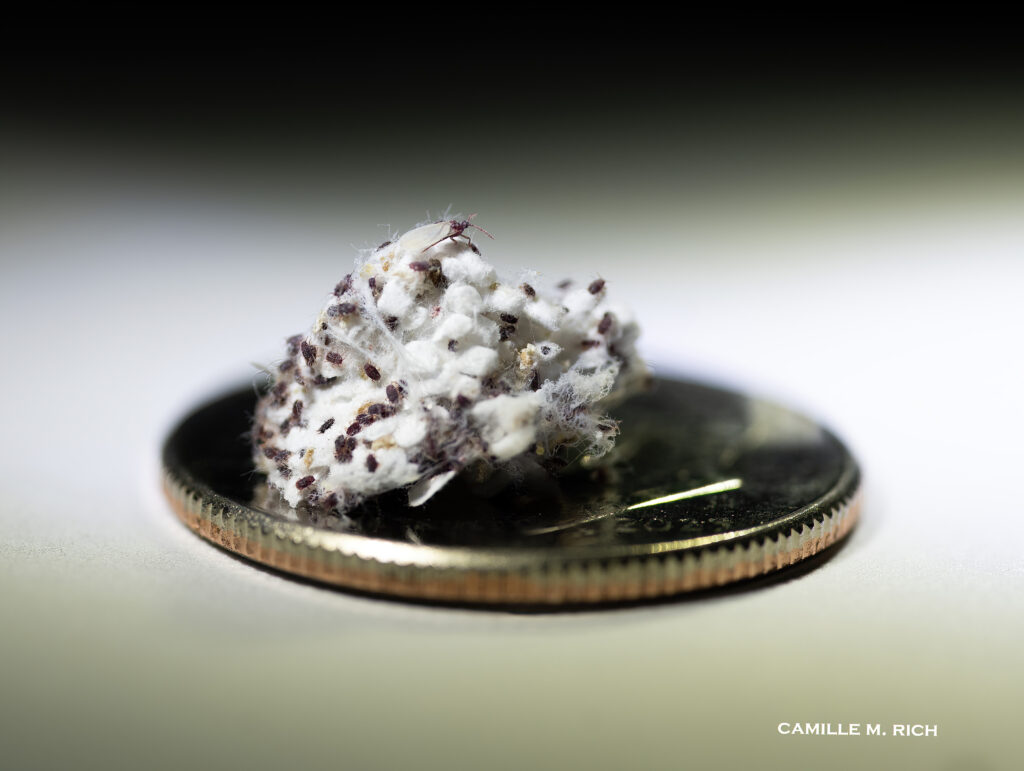
What makes this year more unusual, as far as my memory can recollect, is that this year the amount of this scale insect seems to have more than doubled from previous years. This got me to thinking. Why is this happening?
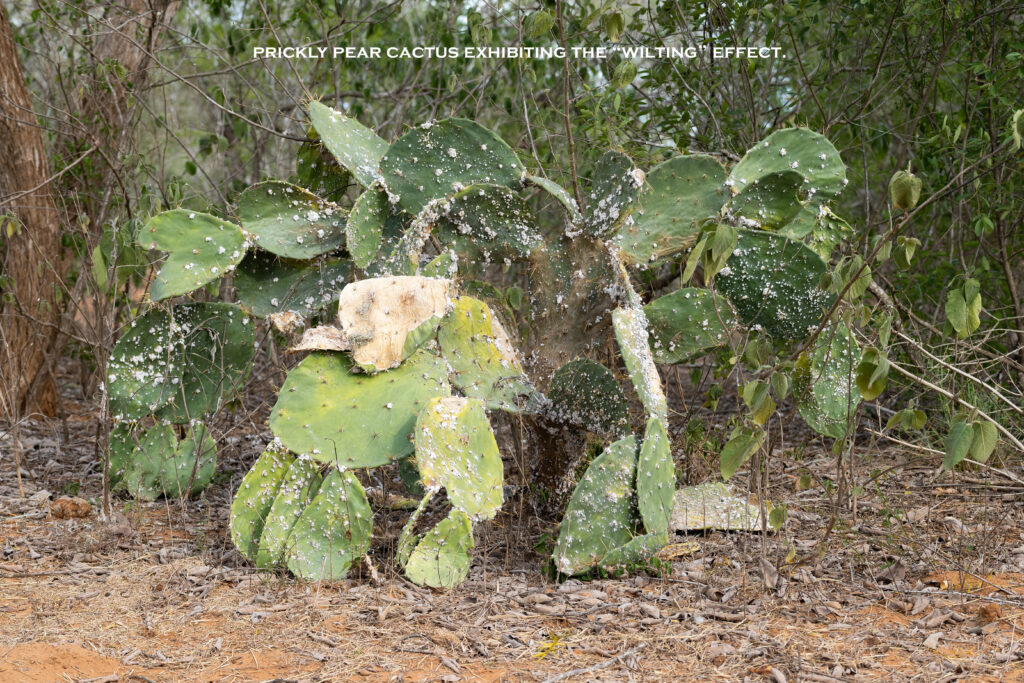
Despite a few “Citizen Scientist” theories I have put together to try to better understand (and possibly explain) the cochineal explosion, I really do not have any answers—only more questions. Nevertheless, I now have plenty of scale insects available to be harvested to afford me the opportunity to pick up with a natural dyeing experiment using cochineal that I put on hold about a year and a half ago.
A few exciting, fun facts about cochineal:
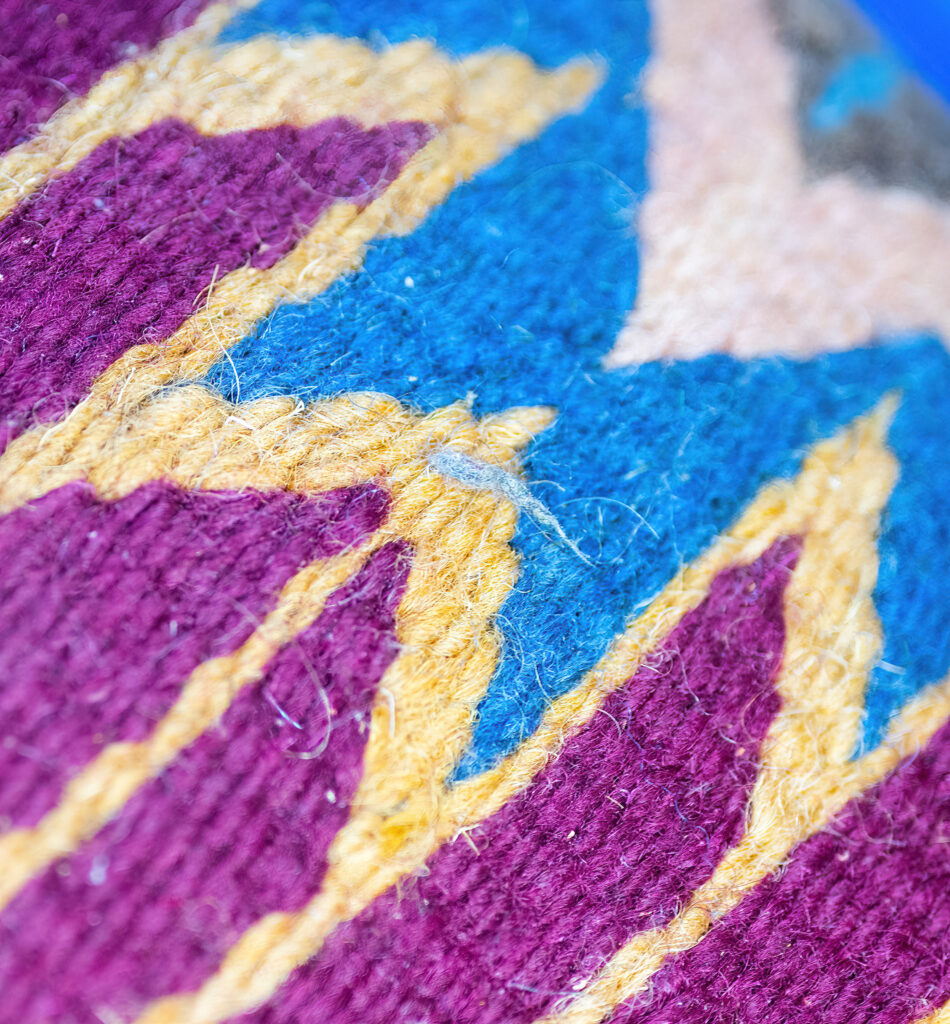
- The cochineal insect has been used for centuries to produce a beautiful red pigment.
- Historically speaking, the regions of Puebla, Tlaxcala, and Oaxaca, Mexico, had systems for breeding of cochineal and engineering ways to breed them for maximum red pigmentation in the dyes they yielded.
- The Mayans and Aztecs used the cochineal pigment in rituals and for trade; red was symbolic of the gods, sun and blood.
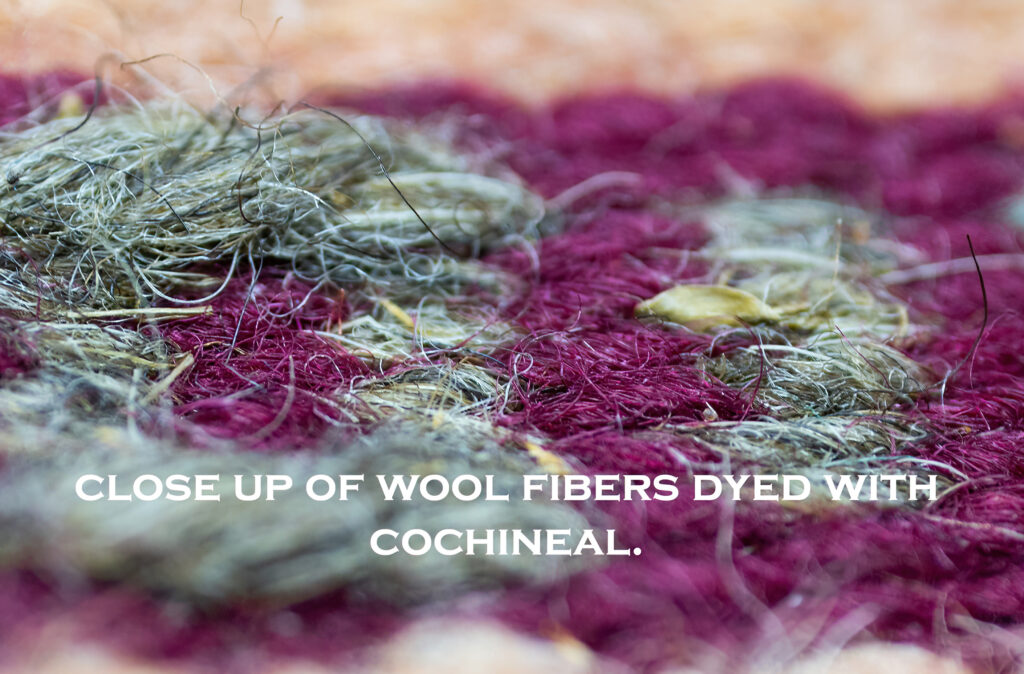
- Farms where cochineal insects and their host cacti are cultivated together are called “Nopalries.”
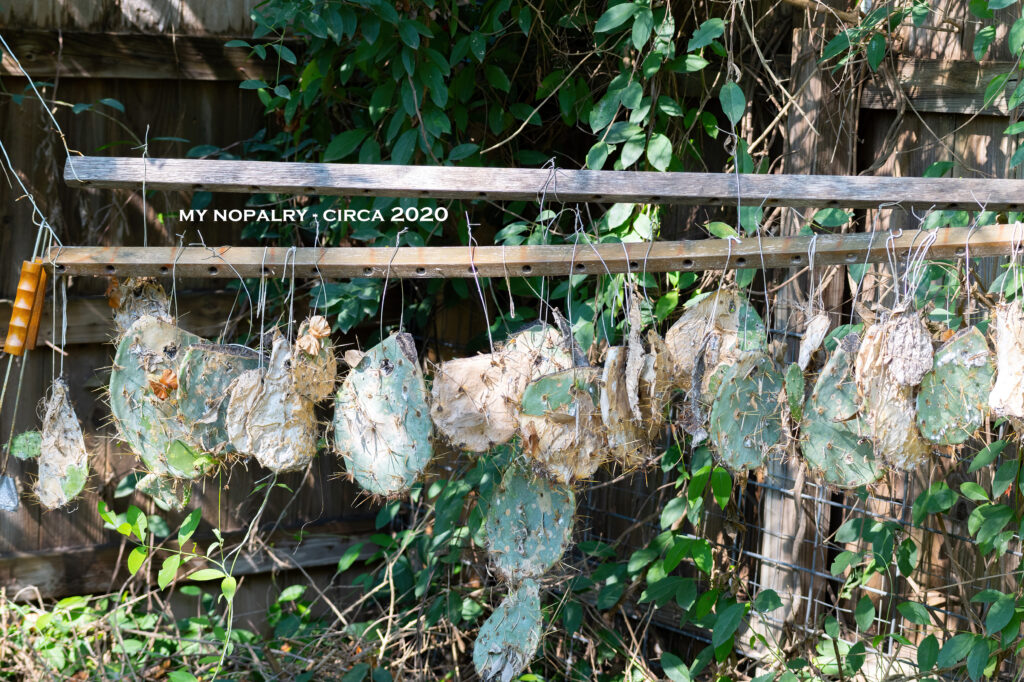
- This bright red pigment has been used in many works of art, including “The Bedroom” by Vincent van Gogh.
- The red pigment became an international symbol for power in Europe, and the secret of its origin was carefully guarded by Spain.
- This highly sought after pigment was used in uniforms for the English—hence, the resulting term: English “Redcoats.”
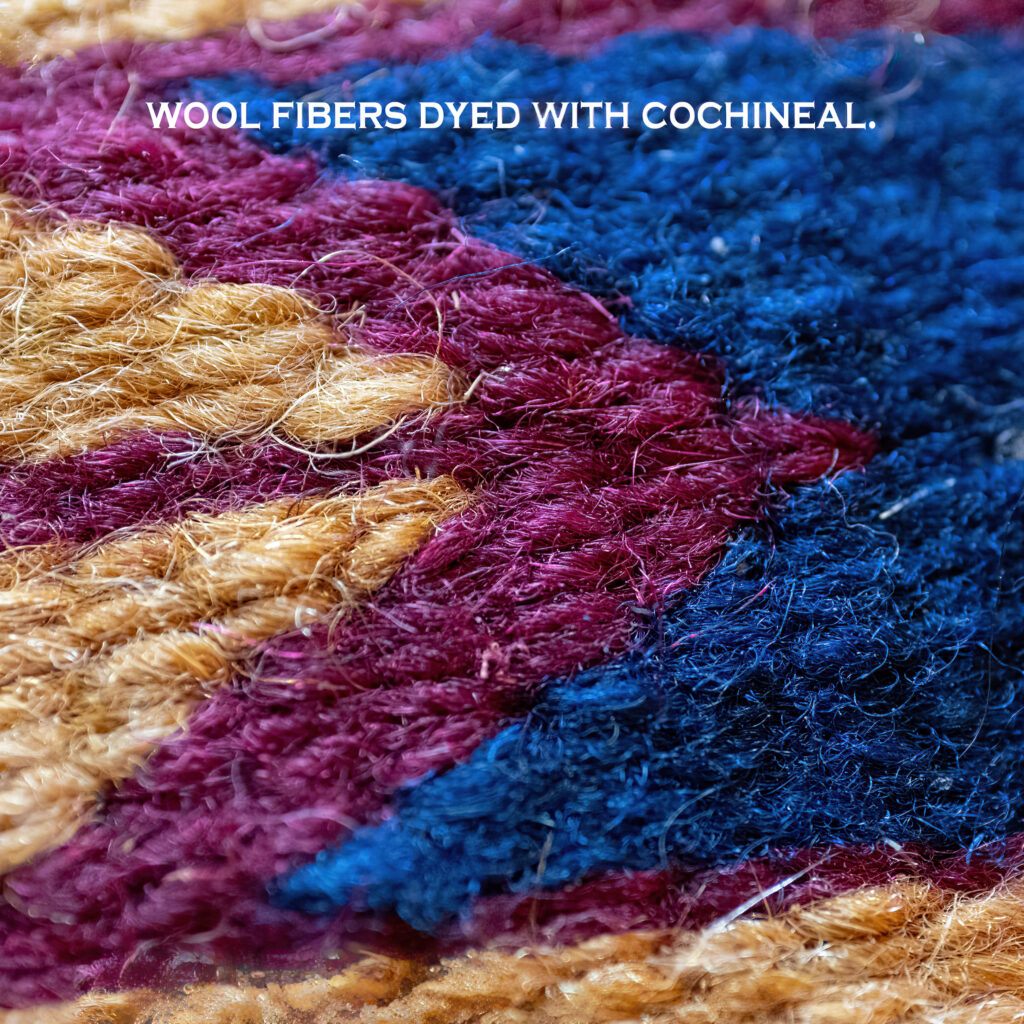
- This intense, red pigment became a symbol of authority and was utilized in the robes worn by Roman Catholic clergy.
- The red pigment, which is carminic acid, is the product of a substance that the female cochineal uses to protect her eggs from predators.
- The white, waxy substance on Prickly Pear cacti pads, which resembles “fluff” or cotton balls, is secreted by the tiny cochineal nymphs to protect them from water loss and the sun.
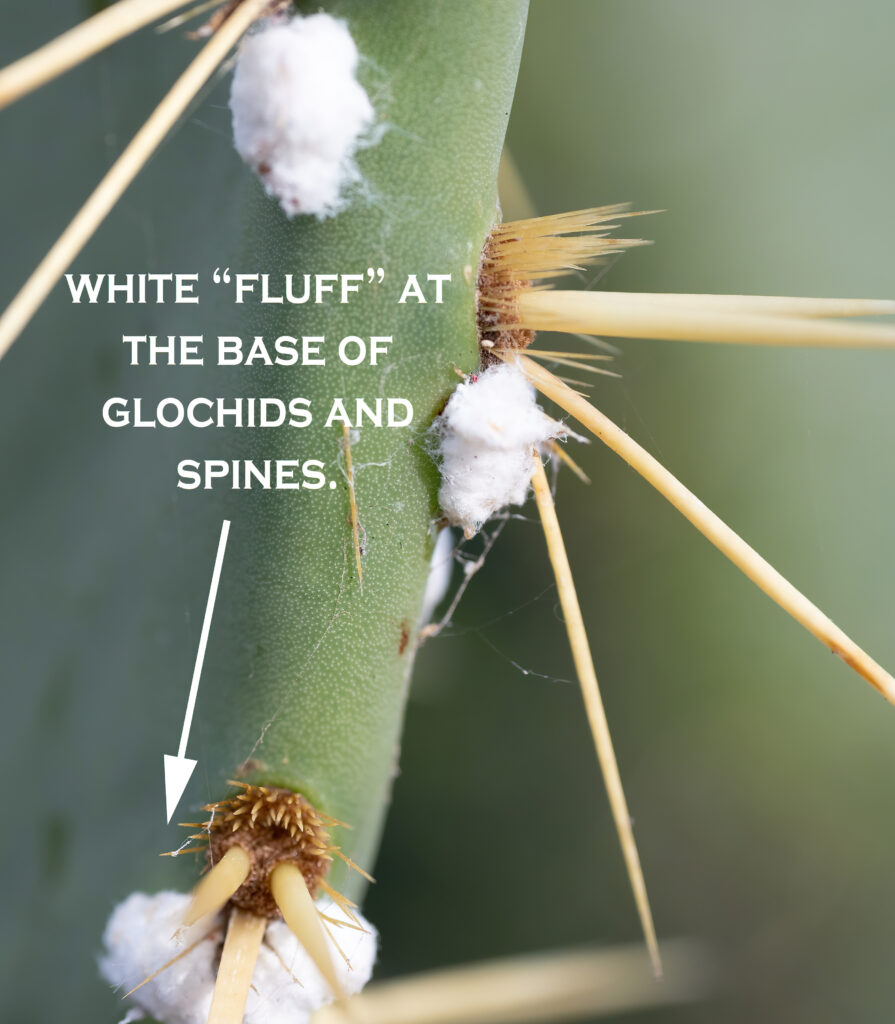
Microscopic view of what is happening in the “white fluff”:
- In South Africa, some cochineal species have been used as a means of biocontrol for invasive cacti species.
- Some insects are natural enemies of the cochineal including lady bugs, ants, parasitic wasps, and lacewings, just to name a few.
- Some rodents (most especially rats), birds, and reptiles also feast on cochineal.
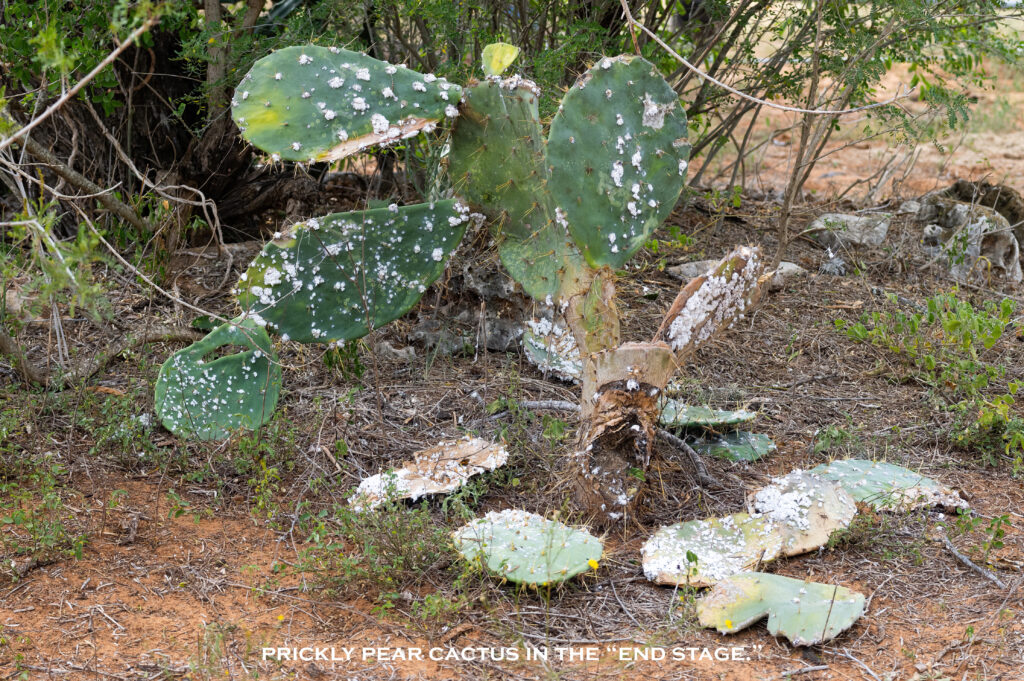
- Some insects are natural enemies of the cochineal including lady bugs, ants, parasitic wasps, and lacewings, just to name a few.
- Some rodents (most especially rats), birds, and reptiles also feast on cochineal.
- It takes approximately 70,000 insects to make one pound of cochineal.
- Colors that cochineal can produce include scarlet, crimson, and orange.
- In more recent times, cochineal has been replaced by synthetic dyes.
- Nevertheless, cochineal continues to be used in cosmetics and beverages.
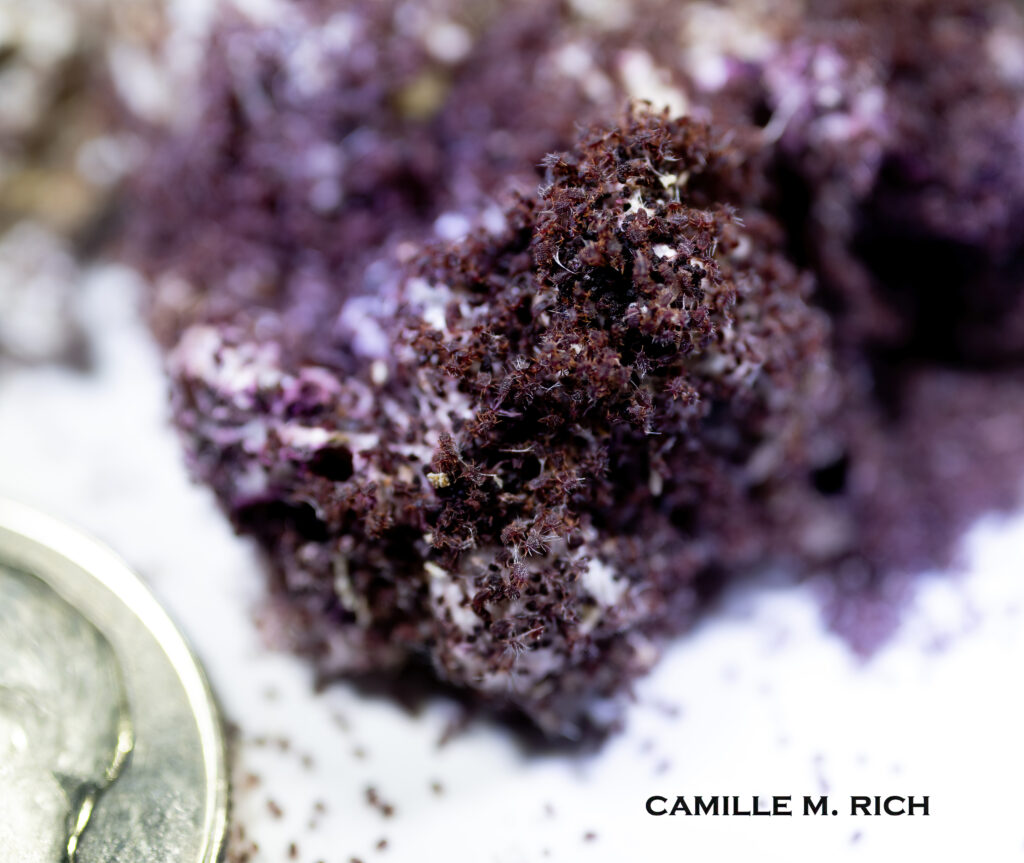
After a few months of monitoring this heavy infestation via, walking surveys of the prickly pear population, I have begun to observe what appear to be “end stages” of the effects of the current, heavy cochineal infestation on Prickly Pear cacti.
In the beginning of a cochineal infestation on an individual Prickly Pear cactus, I have observed that the individual’s pads will appear green and plump with moisture—sporting just a few patches of cochineal white “fluff” in the glochids that occur on the surface of the prickly pear pad.
Over time, the amount of white “fluff” increases over the surface area of the prickly pear pad.
Many of the green prickly pear pads, recently, are currently solid white with cochineal “fluff” —giving them the overall appearance of huge, Texas-size cotton balls. Prickly pear pads that have been under heavy cochineal infestation for some time will begin to turn shades of pale yellow or pale green—most assuredly on their way to turning brown, completely drying out, and withering away.
The “wilting” effect:

After a few weeks under heavy infestation, I also have begun to observe a simultaneous weakening of the central base structure of the affected Prickly Pear cacti. The afflicted Prickly Pear cacti will look as though they are “wilting” and begin to droop over. Once they have seemingly “wilted,” it becomes difficult for the cactus to bear the weight of their own pads.
From what I can discern, this “wilting” stage appears to most likely be the final stage before an individual cactus ends up on the ground—nothing more than a heap of pale yellow or pale green pads covered in cochineal.
The “end” stage:

After the “wilting effect” progresses to a point of severity that the Prickly Pear cacti gains an overall appearance of sporting pale green or pale yellow pads, combined with additional pads beginning to fall to the earth below, the cacti have entered what I have observed to be the final stage of infestation—the “the end stage.”
Almost as soon as I notice Prickly Pear cactus pads have begun to fall to the ground around what is left of the central base structure of an individual, it seems to be only a matter of a few more days before the cactus is dead.
Sometimes the “end stage” process draws out a big longer—to perhaps even another week or so—if a large Prickly Pear cactus of, say, approximately five to six feet tall in height by approximately six to eight feet in diameter, is under heavy cochineal infestation.
Ultimately, once the Prickly Pear cactus hits the red, sandy soil, there it will remain and continue the process of desiccation—drying up and withering away until it is nothing more than mere brown, crispy pads resembling Texas-size tortilla chips.
Small insect packs a large “punch” on the ecosystem.
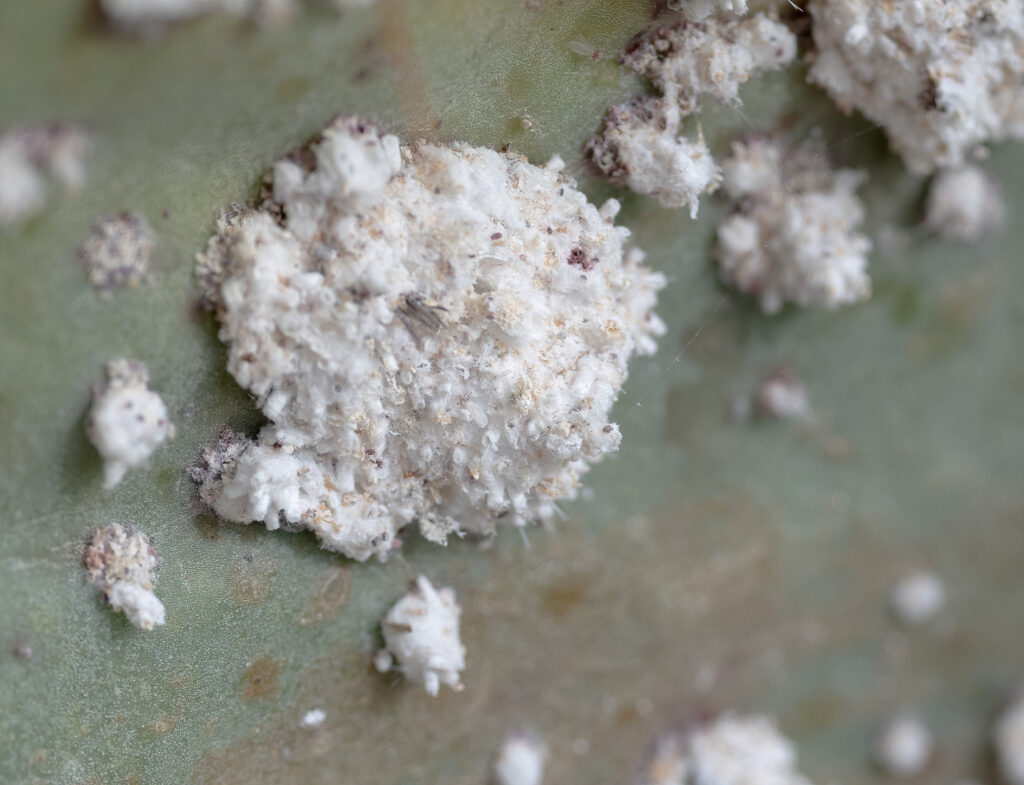
It is quite incredible, really, that such a small insect could wreak such large-scale havoc on hardy, well-armored flora.
Good riddance to the prickly pear? …….maybe not…….
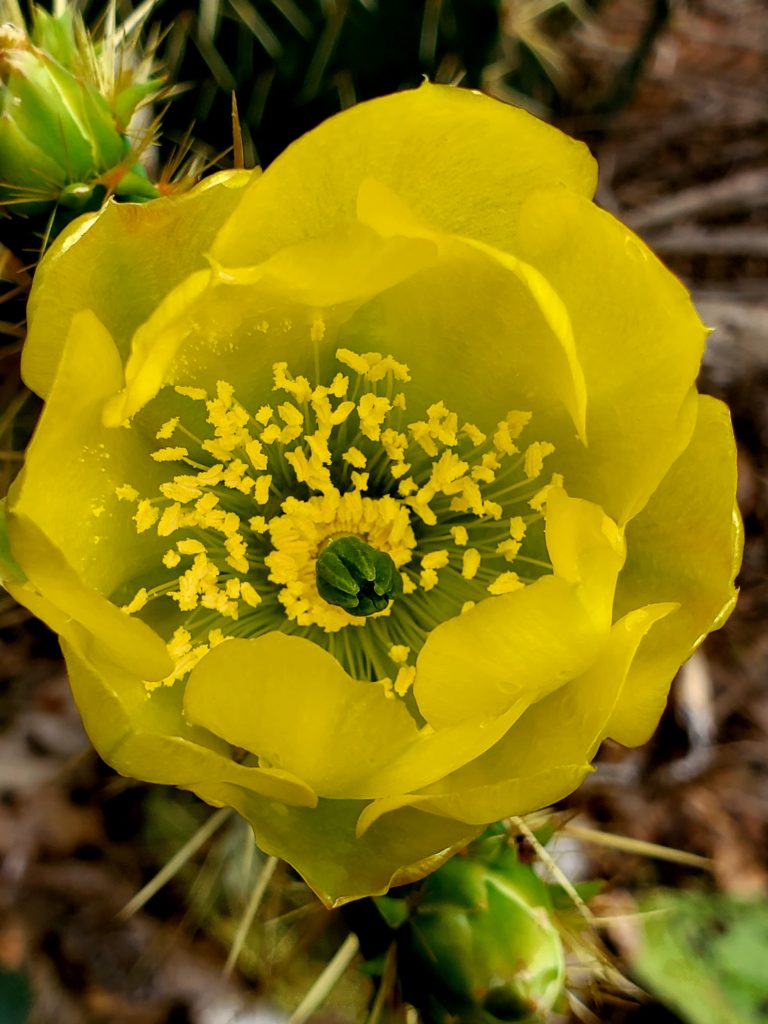
Frankly, in the beginning of this cochineal explosion, I saw the demise of a few Prickly Pear cacti as a bit of a blessing.
Why would I think this?
Well, most of the invasive grasses I battle with my shovel and stirrup hoe happen to be smack dab in the center of huge groups of stickery, thorny, unforgiving Prickly Pear patches. Consequently, I thought that if a few of these Prickly Pear patches died back down, it would help me get in closer to combat the invasive grasses that compete with our native grasses for prime real estate and moisture.
Currently, I am genuinely concerned about the overall status of the Prickly Pear population on my little patch of red, sandy soil.
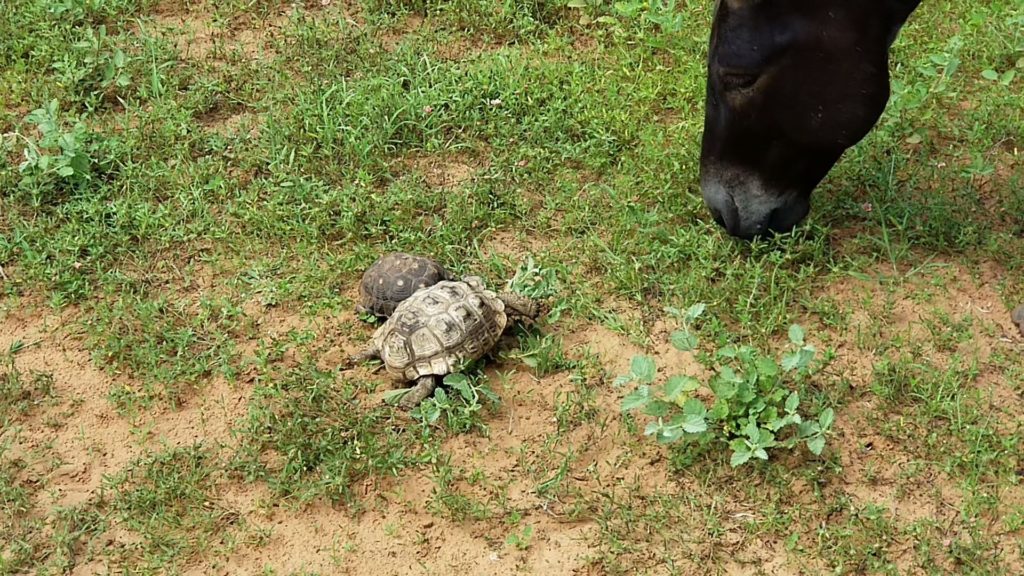
After just a month or so of heavy cochineal infestation, I have observed that the Prickly Pear cacti seem to wither up and die under the effects of a heavy cochineal infestation. This is disconcerting to me as numerous animal inhabitants of this little ranch on the South Texas Sand Sheet utilize Prickly Pear cacti and Prickly Pear tunas as part of their diet throughout the late summer months.
Prickly Pear cacti provide food and shelter for wildlife.
Some of the animals that rely on the Prickly Pear cacti, for instance, include the Texas tortoise, javelina, and coyote, just to name a few. While other animal residents, such as rodents, snakes, and some birds choose the cover and protection of Prickly Pear cacti glochids and spines as the perfect spot to set up their base camps or build their nests. Prickly Pear blooms support numerous insects, including Texas native bees. Oh, and then there is the Prickly Pear jelly that I enjoy making and sharing, but I digress.
Texas tortoises on the South Texas Sand Sheet:
Coyotes on the South Texas Sand Sheet:
Javelina on the South Texas Sand Sheet:
Rodents on the South Texas Sand Sheet:
Snakes on the South Texas Sand Sheet:
Bird diversity on the South Texas Sand Sheet:
Pollinators on the South Texas Sand Sheet:
It is all connected…
Prickly pear cacti are an integral part of not only the South Texas Sand Sheet, but they are also an integral part of the endangeredTamaulipan Thornscrub Thicket that we are fortunate to still have represented in an ever-shrinking native plant habitat in the Rio Grande Valley. We must preserve what is left of our native habitat in Deep South Texas.
“One pot, one plant, one front porch, one frontyard, or one backyard at a time—we can ALL make a difference TOGETHER!”
Camille M. Rich
As a steward, I am going to do my best to try and maintain and preserve some prickly pear cacti.
I am going to keep an eye on the cochineal infestation on the Prickly Pear cacti on my little piece of the South Texas Sand Sheet.
In the Prickly Pear patch areas that are currently under heavy infestation, I am looking forward to, in the near future, significantly large areas of red, sandy soil “opening up” where large Prickly Pear cacti populations have historically crowded out all other forms of native habitat. The biocontrol effects of the Cochineal are helping me remove large areas of Prickly pear cacti that I have battled—for years—with my shovel and machete. These newly “opened up” areas will allow native wildflowers, native grasses, native shrubs, and native trees the opportunity to reforest areas where the Prickly Pear cacti have all but choked them out.
Frankly, the current, heavy Cochineal infestation is beneficial not only for the habitat, but it is also helping me out a great deal. How can this be? Well, the current, heavy Cochineal infestation is definitely saving me time, money spent to hire help, and lots of wear and tear on my hands, arms, legs, and back in the traditional methods of removing prickly pear cacti.
However, I am going to do my best to protect certain portions of the Prickly Pear population that seem to have evaded the current, heavy cochineal infestation. How will I do this? From what I have read, a simple solution of water and unscented dish soap sprayed on the Cochineal infestation will help control them.
As this article comes to a close…..
As I bring this portion of my “deep dive” into Cochineal to a close, I would just like to say that the interconnectedness of habitat and the creatures it supports is critical. This message cannot be overstated, overemphasized, or undershared.
The next phase of my “deep dive” into Cochineal will involve dyeing natural textiles with a dye concentrate extracted from this scale insect. Dyeing textles with Cochineal has been done for centuries, and I am excited to give a try.
Stay tuned. There is definitely more to come.

Bibliography for this article:
Botanical Colors. “Dyeing for Dummies: The Wonders of Cochineal.” Botanical Colors. Web. 20 June 2014. https://botanicalcolors.com/dyeing-for-dummies-the-wonders-of-cochineal/#:~:text=Cochineal%20is%20a%20red%20dye,Europe%20from%20Mexico%20and%20Peru. Accessed on 16 November 2023.
Britannica, The Editors of Encyclopedia. “Cochineal.” Encyclopedia Britannica. Web.29 Sep. 2023. https://www.britannica.com/technology/cochineal. Accessed 15 November 2023.
Centro de Arte Textil Zapoteco Bii Dauu SC de RL. Facebook Page. Web. https://www.facebook.com/biidauuteotitlandelvalle?locale=es_LA Accessed on 16 November 2023.
Conley, Mrs. Emma, and Mrs. Meta Lewis. “Vegetable Dyeing by Mrs. Emma Conley, Second Edition” Pineland School of Handicrafts, Inc. Pineland, N. C. First edition was printed in 1959. [Print.]
Laveaga, Gabriela Soto. “Cochineal Origins.” YouTube Channel: Harvard Museums of Science and Culture. Web. 19 April 2022. https://www.youtube.com/watch?v=bkWZw1sPawA Accessed on 15 November 2023. [“In this video from the online exhibit spotlight, ‘Cochineal: How Mexico Made the World See Red,’ Gabriela Soto Laveaga, Professor of the History of Science and Antonio Madero Professor for the Study of Mexico, Harvard University, explains the origins of cochineal.”]
Harvard University. “Cochineal: A Product of Nature.” Harvard Museums of Science & Culture. Web. https://hmsc.harvard.edu/online-exhibits/cochineal1/product-nature/. Accessed 15 November 2023.
Edinburg Scenic Wetlands and World Birding Center, Edinburg, TX. “Cochineal Insect: The Natural Dye.” Edinburg Scenic Wetlands and World Birding Center. Web. 19 June 2021. https://edinburgwbc.org/news/f/cochineal-insect-the-natural-dye Accessed on 16 November 2023.
Miller, Brittany J., Knowable Magazine. “Scientists are Making Cochineal, a Red Dye From Bugs, in the Lab.” 29 March 2022. Smithsonian Magazine. Web. https://www.smithsonianmag.com/innovation/scientists-are-making-cochineal-a-red-dye-from-bugs-in-the-lab-180979828/#. Accessed 15 November 2023.
Tull, Delena. Edible and Useful Plants of Texas and the Southwest: A Practical Guide. 1987. University of Texas Press, Austin. [Print]
Richardson, Alfred, and Ken King. 2011 Plants of Deep South Texas: A Field Guide to the Woody and Flowering Species. College Station: Texas A & M University Press. [Print]
Wikipedia. “Cochineal.” Wikipedia: The Free Encyclopedia. Web. https://en.wikipedia.org/wiki/Cochineal#:~:text=A%20nopal%20cactus%20farm%20for,harvesting%20the%20insects%20by%20hand. Accessed 16 November 2023.
